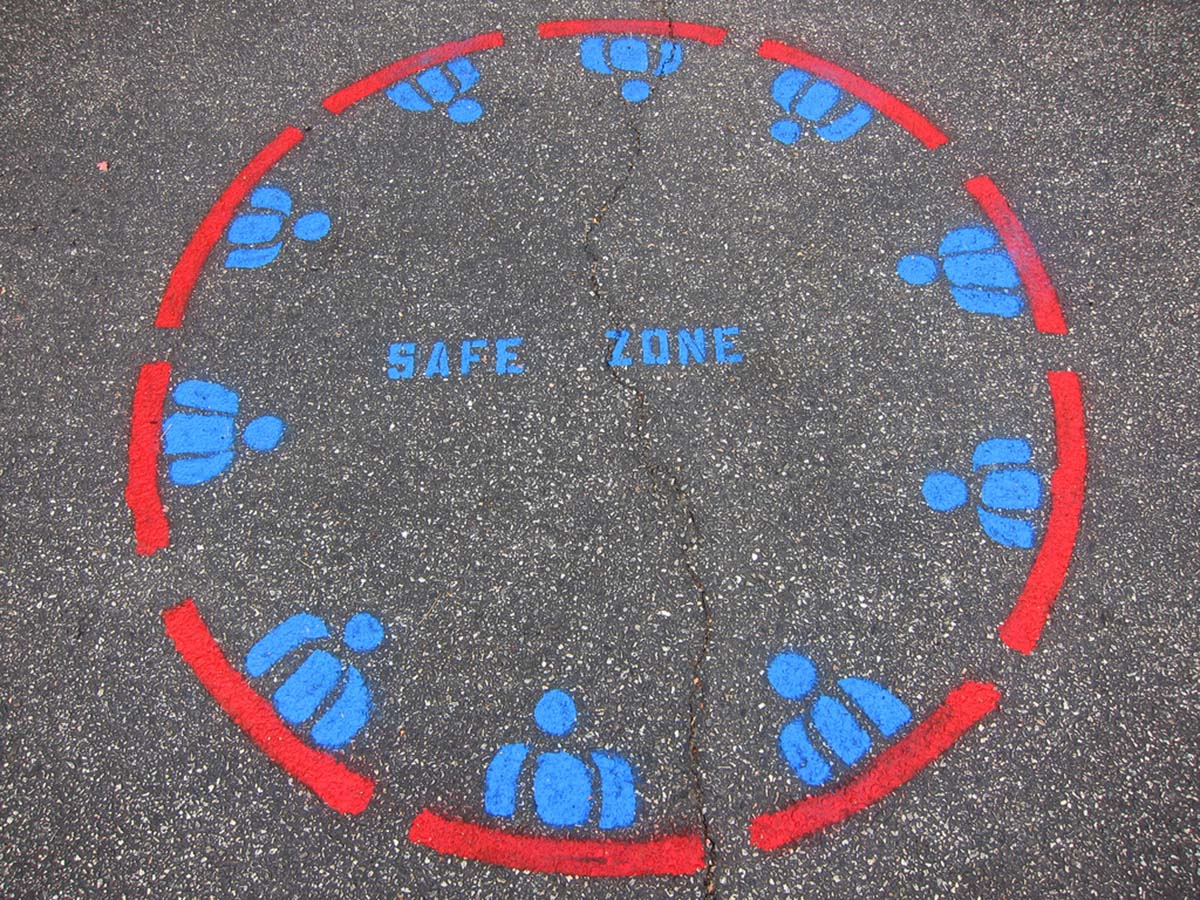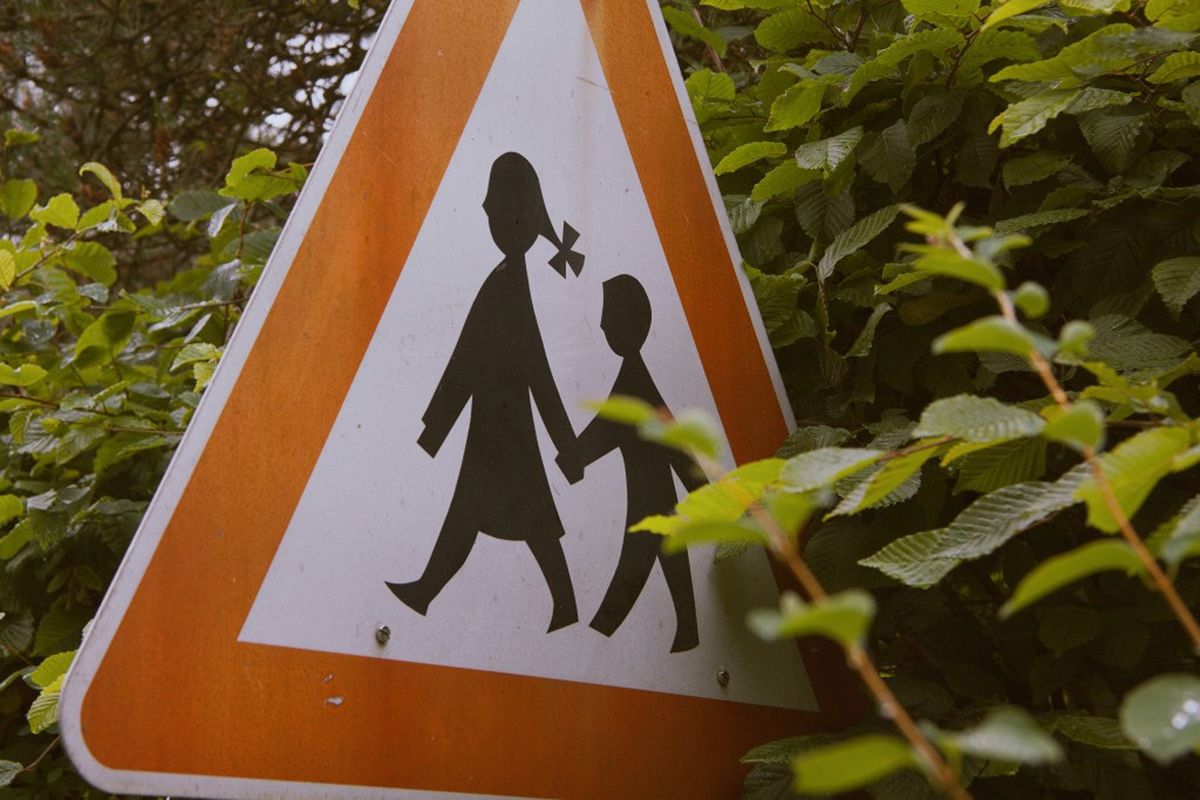Warning: This article contains facts that may offend delicate sensibilities.
Someone who went to college in the United States in the 1960's might have trouble recognizing colleges today. Whereas colleges in the 60's were often places of loud, tumultuous, rude, and sometimes violent disagreement, colleges of 2016 have gone to the opposite extreme. "Safe zones" provide young adults a haven of emotional respite where words and ideas that might upset them are not allowed.

What Was Life Like Safe Zones?
Americans who grew up in the 1940's, 1950's, 1960's, or 1970's mostly were allowed unsupervised childhoods. After-school activities were not monitored except with the admonition "Be home by dark." Children rode bicycles into strange neighborhoods. They climbed into abandoned buildings. They even shared peanut butter sandwiches, sometimes after the first child had taken a bite. Sometimes did the truly unthinkable and tried (tobacco) cigarettes and looked at their parents' (print) pornography. If another kid hit you in the nose, the first question your parent would probably ask was "And did you hit back?" meaning "Did you two work it out, or do I have to get involved?"
In the farming community where I myself was raised, a six-year-old probably had shot a gun (a good thing when you live in a location where there are animals that can literally eat you), a ten-year-old probably could drive a pickup and a farm tractor, the same tractor his father or mother could drive, not a play tractor (and I lost one of my childhood chums at age 12 when his tractor rolled over), as needed, and a twelve-year-old had probably assisted a parent or a vet in birth or castration of farm animals. This is not to mention some experience in butchering and sausage making.
Then in the 1980's, American parents started becoming a lot more cautious. Sensational stories of mass child abuse, which were found to be completely untrue, but only after innocent teachers and child care workers had waited in jail for years, filled the news media. In 1984, milk cartons started carrying pictures of missing children. A massacre at Columbine High School in 1999 led schools to adopt a zero-tolerance attitude toward violence, to the point that one little boy was expelled from school for pointing his finger at someone and saying "Bang," and another child was expelled for pointing a pickle in a menacing manner.
READ Parents: How To Help Children Who Are Bullied Or Bullying
What Are Safe Zones Like Today?
It was only a matter of time before children who had been carefully protected from adults became adults seeking to be protected from other adults. Safe Zones started becoming common on campuses of selective colleges that charge high tuition:
- Harvard law professor Jeannie Suk wrote of students asking other professors not to teach rape law, or even to use the word violate, which might upset future lawyers who had personal experience of being sexually assaulted, or who were traumatized by the stories of others.
- Laura Kipnis, a professor at Northwestern University, wrote an essay in The Chronicle of Higher Education describing the politics of sexual paranoia on her campus. Then students who were offended filed legal complaints against her.
- At Christ Church College at Oxford University, famous for its debates, a debate on abortion had to be canceled after student protests that both debaters were men.
- The president of Smith College, Kathleen McCartney, had to apologize for her apparent sympathies for a professor who protested the use of the euphemism "the n-word" when discussing Mark Twain's term for African-Americans in the American class Huckleberry Finn. (See, we know our limits, too.)
When I myself was in public school in the 1960's, Mark Twain's term was already something we didn't use in normal conversation. We dared speak it aloud when we were discussing the book in class, but even African-American students in the class realized that the novel had been written in the nineteenth century.
The Cure for Coddled College Students
On many college campuses, a new way of describing social interactions previously considered innocuous has arisen.
Microaggressions describe tiny social cues that seem harmless but mask sinister attitudes. For example, it used to be a point of national pride to say, "America is a melting pot," America welcomes and assimilates many different cultures. Now the message is construed as "You must submerge your ethnic identity to submit to the dominant culture." Or consider a seemingly well-intentioned statement like, "We choose job candidates on the basis of their qualifications." Well, that can only mean that they believe minority group members are less qualified so they choose candidates who look like them.

Trigger warnings are alerts that lecturers are expected to issue if something in a discussion might cause a strong emotional response. For instance, legendary American poet Maya Angelou spent part of her early life working as a prostitute (which is nearly always described with the euphemism "sex worker"). The professor would be considered obligated to allow students who would be unduly upset by such revelations, who might find the discussion a "trigger" to remembering unpleasant feelings, to leave the lecture hall and avoid discussion of how Maya Angelou's life informed her work.
In 2013, the US Departments of Education and Justice broadened the definition of sexual harassment to include "unwelcome" speech. To avoid federal investigations, universities now define unwelcome speech as including revelations of race (you're not supposed to notice), religion, and veteran status. Everyone is supposed to rely on his or her own self-made definition of what's welcome and unwelcome, but to avoid any utterance that might be unwelcome by another hearer.
Why are we even having a discussion of microaggressions and trigger warnings and unwelcome speech? The simple fact is, American college students are an anxiety-ridden bunch. In 2014, a survey by the American College Health Association found that 54 percent of American students reported "overwhelming anxiety" at some point in the last twelve months. Students are reporting more emotional crises. They are increasingly fragile. This changes the way professors and administrators interact with them.
One factor that has contributed to the rising rates of anxiety on American college campuses is social media. Nearly all American college students have been involved with social media since early adolescence. On sites like Facebook, likes and dislikes create divisions between "us" and "them." This gives teens and young adults many opportunities to approach their views of the world with confirmation bias. This logical error is ignoring evidence that contradicts the conclusion with which you are most comfortable. Social media becomes an echo chamber that reinforces self-importance without giving young people the rough and tumble opportunities to develop self-confidence and self-esteem. Every misdemeanor becomes a hate crime. Every fact becomes a hate definition. Students can't tell the difference between a discussion about hate speech and hate speech. They can't tell the difference between a discussion of racism and racism itself.
What's the way to help college students regain their mental health?
Back when colleges still required courses in things like philosophy, students might have been exposed to the ancient Roman thinker (and emperor) Marcus Aurelius. He said, "Life itself is but what you deem it." The Buddha taught, "Our lives are the creations of our minds."
The modern expression of this ancient philosophy is cognitive behavior therapy. In cognitive behavior therapy, people learn to master their own patterns of thought. Colleges shouldn't try to protect students from inevitable upsets. They should challenge students with more ideas than they can handle, so they have to learn the skills of prioritization, negotiation, and cooperation. It's fine to teach students to avoid giving unintentional offense, but it's necessary to allow students to pursue their truths wherever they lead.
READ The 7 Most Unhelpful Things to Say to Someone with Anxiety
And how, specifically, can college students climb out of their protected emotional cradles? Here's a short list of suggestions:
- Avoid mind reading. You don't automatically know what someone else thinks about you or anything else.
- Avoid global evaluations, either positive or negative. Even people who have known each other for years can still discover facts about each other.
- Avoid catastrophizing, a "wouldn't it be terrible if" attitude. Just do.
- Avoid dichotomizing, thinking of people in all or nothing terms.
- Avoid fortunetelling. It's the only way you can push your limits.
- Avoid the inability to disconfirm. You can't be sure something is if you can't also be sure it isn't.
- Avoid negative filtering, looking at only the downside.
- Avoid positive filtering. Don't give people or ideas undue credit.
- Avoid emotional thinking. Your emotions can inform but should not limit your thinking.
- And avoid blaming others. Take responsibility for your own outcomes.
- Judy Shulevitz. In College and Hiding From Scary Ideas. New York Times. 21 March 2015.
- Photo courtesy of fontplaydotcom: www.flickr.com/photos/fontplaydotcom/8159238553/
- Photo courtesy of barnimages: www.flickr.com/photos/barnimages/19507052238/
- Photo courtesy of fontplaydotcom: www.flickr.com/photos/fontplaydotcom/8159238553/

